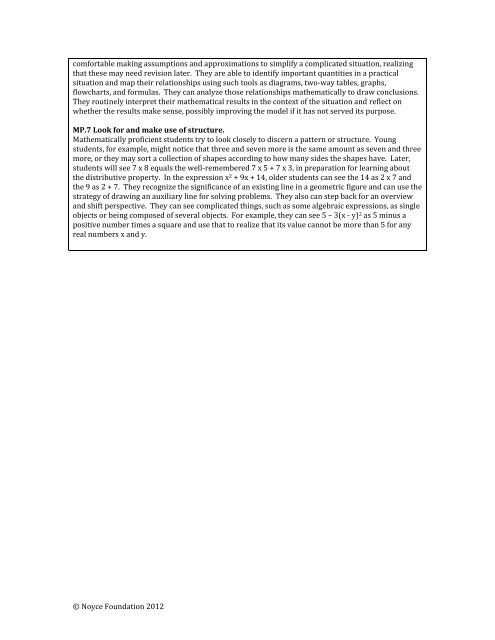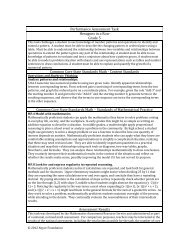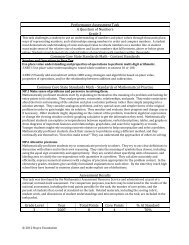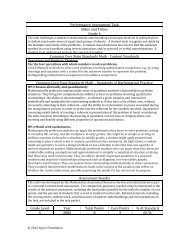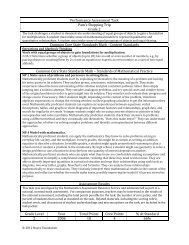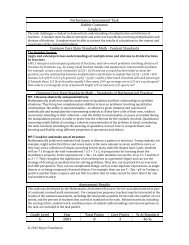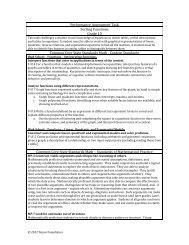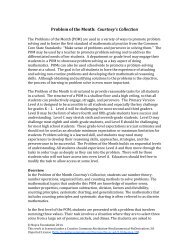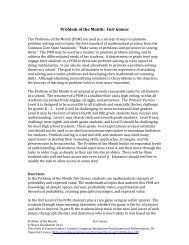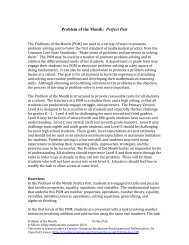subdividing
Problem of the Month Part and Whole - Inside Mathematics
Problem of the Month Part and Whole - Inside Mathematics
- No tags were found...
Create successful ePaper yourself
Turn your PDF publications into a flip-book with our unique Google optimized e-Paper software.
comfortable making assumptions and approximations to simplify a complicated situation, realizing<br />
that these may need revision later. They are able to identify important quantities in a practical<br />
situation and map their relationships using such tools as diagrams, two-way tables, graphs,<br />
flowcharts, and formulas. They can analyze those relationships mathematically to draw conclusions.<br />
They routinely interpret their mathematical results in the context of the situation and reflect on<br />
whether the results make sense, possibly improving the model if it has not served its purpose.<br />
MP.7 Look for and make use of structure.<br />
Mathematically proficient students try to look closely to discern a pattern or structure. Young<br />
students, for example, might notice that three and seven more is the same amount as seven and three<br />
more, or they may sort a collection of shapes according to how many sides the shapes have. Later,<br />
students will see 7 x 8 equals the well-remembered 7 x 5 + 7 x 3, in preparation for learning about<br />
the distributive property. In the expression x 2 + 9x + 14, older students can see the 14 as 2 x 7 and<br />
the 9 as 2 + 7. They recognize the significance of an existing line in a geometric figure and can use the<br />
strategy of drawing an auxiliary line for solving problems. They also can step back for an overview<br />
and shift perspective. They can see complicated things, such as some algebraic expressions, as single<br />
objects or being composed of several objects. For example, they can see 5 – 3(x - y) 2 as 5 minus a<br />
positive number times a square and use that to realize that its value cannot be more than 5 for any<br />
real numbers x and y.<br />
© Noyce Foundation 2012


